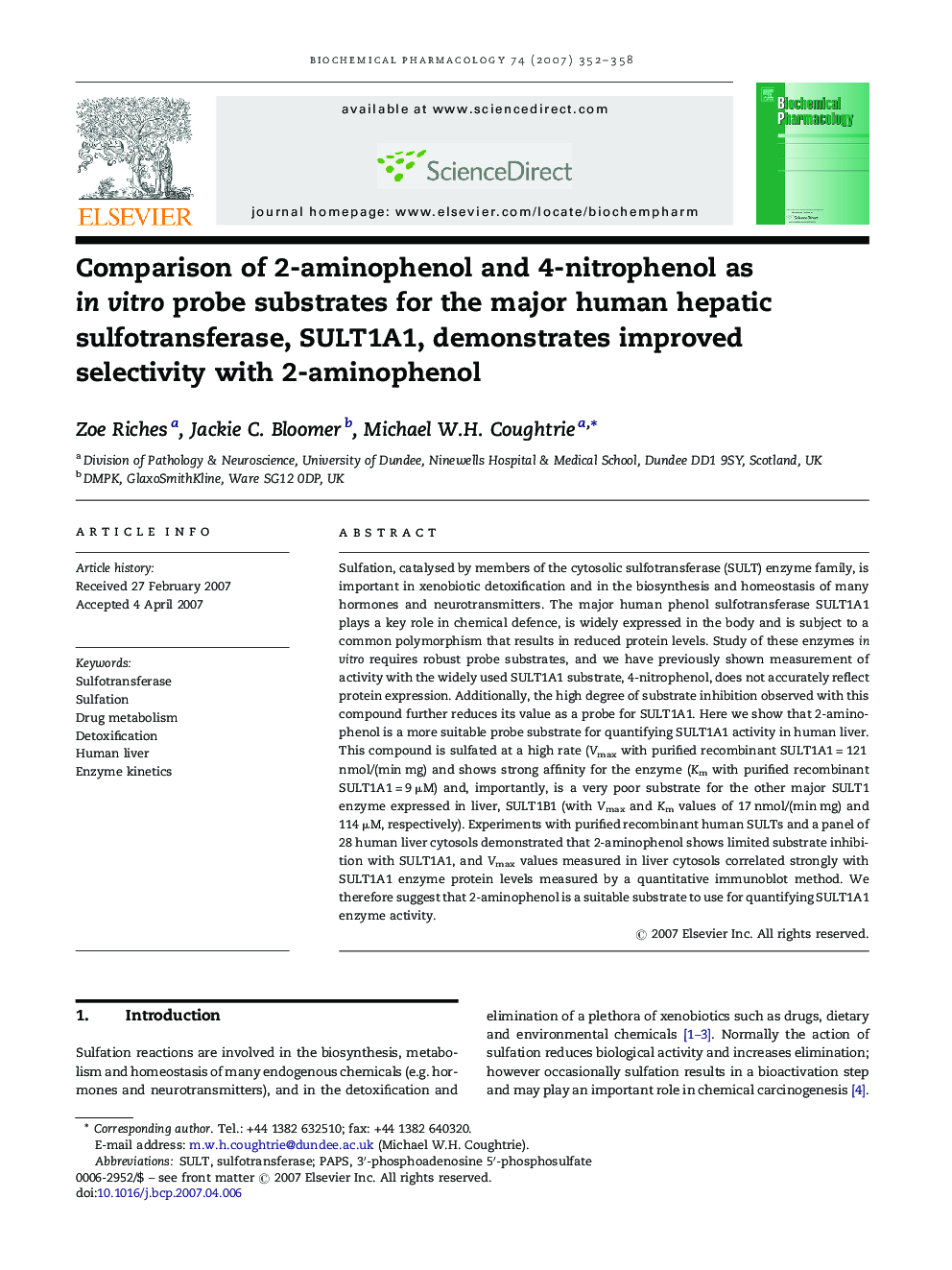| Article ID | Journal | Published Year | Pages | File Type |
|---|---|---|---|---|
| 2515479 | Biochemical Pharmacology | 2007 | 7 Pages |
Sulfation, catalysed by members of the cytosolic sulfotransferase (SULT) enzyme family, is important in xenobiotic detoxification and in the biosynthesis and homeostasis of many hormones and neurotransmitters. The major human phenol sulfotransferase SULT1A1 plays a key role in chemical defence, is widely expressed in the body and is subject to a common polymorphism that results in reduced protein levels. Study of these enzymes in vitro requires robust probe substrates, and we have previously shown measurement of activity with the widely used SULT1A1 substrate, 4-nitrophenol, does not accurately reflect protein expression. Additionally, the high degree of substrate inhibition observed with this compound further reduces its value as a probe for SULT1A1. Here we show that 2-aminophenol is a more suitable probe substrate for quantifying SULT1A1 activity in human liver. This compound is sulfated at a high rate (Vmax with purified recombinant SULT1A1 = 121 nmol/(min mg) and shows strong affinity for the enzyme (Km with purified recombinant SULT1A1 = 9 μM) and, importantly, is a very poor substrate for the other major SULT1 enzyme expressed in liver, SULT1B1 (with Vmax and Km values of 17 nmol/(min mg) and 114 μM, respectively). Experiments with purified recombinant human SULTs and a panel of 28 human liver cytosols demonstrated that 2-aminophenol shows limited substrate inhibition with SULT1A1, and Vmax values measured in liver cytosols correlated strongly with SULT1A1 enzyme protein levels measured by a quantitative immunoblot method. We therefore suggest that 2-aminophenol is a suitable substrate to use for quantifying SULT1A1 enzyme activity.
